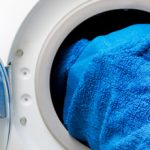Keep Your Appliances Working, By Diagnosing Faults
January 16, 2015 | Appliances and Appliance Care | No comments
 There are a few things which whatever the weather, as homeowners we still need to do, from cleaning floors through to washing clothes. Unfortunately with the latter, during the winter months when the rain falls, drying clothes once they’ve been washed can often be difficult, especially if your tumble dryer is not working to its full potential.
There are a few things which whatever the weather, as homeowners we still need to do, from cleaning floors through to washing clothes. Unfortunately with the latter, during the winter months when the rain falls, drying clothes once they’ve been washed can often be difficult, especially if your tumble dryer is not working to its full potential.
A fact of life though, is that as with any appliance, tumble dryers can with constant use and little maintenance gain faults, which if not rectified at the earliest opportunity can lead to the efficiency of the appliance dwindling or the appliance not working completely.
To limit the chance of such faults occurring, we’ve taken the time to compile a list of some of the most common faults which occur with tumble dryers, along with tips on how to prevent / rectify such faults.
So, in no particular order the faults are…..
Noise Problems:
At first glance you may not think that a noisy tumble dryer is anything to worry about, more an inconvenience; yet you couldn’t be further from the truth.
There are a number of noises which your tumble dryer could be making when in use, so the first step is to diagnose what type of noise it is that you’re hearing; once the noise has been determined you’ll be able to work out the fault.
Some sounds you’re likely to hear from your tumble dryer when it’s in use include:
- Constant squealing noise when the drum rotates – this is likely to be caused due to wear and tear on the belt tension pulley. The squealing will become worse as the pulley wears more, causing damage to the belt and preventing the drum from turning.
- Rumbling noise as the drum rotates – whilst a squeaking noise is likely to be caused by wear and tear on the belt tension pulley; the rumbling noise will be caused by faulty support wheels which your drum rests on.These wheels can go out of shape and lead to the rumbling noise; but to double check it is the wheels causing the rumbling sound, slowly rotate the drum and see if a regular bump is felt. If it is, the wheels will need replacing.
- Loud hum and no drum rotation – the cause of a loud hum and no drum rotation is due to a seized drum. You can check this by seeing if the tumble dryer drum rotates by hand. If it does, you may have a failed motor or capacitor and these parts will need replacing.
A noisy tumble dryer is one of the easy problems to solve, some of the other common faults which can hinder the performance of your appliance will need a bit more hard work to rectify, but this doesn’t mean you should shy away from these.
Some common issues you’re likely to find with your tumble dryer have already been discussed within our “Keep Your Tumble Dryer Running” post from October 2014. The two main issues discussed within this post include the drum not turning but the motor working and a failed heat element.
We also have a range of advice articles on various tumble dryer issues within our advice centre on videos on our YouTube video; helping you to keep your tumble dryer running, meaning it is ready – whenever it’s called upon.
Whilst diagnosing faults with your tumble dryer will help to keep it working and performing for longer; taking precautions to prevent such faults occurring is also essential, such as regularly cleaning the appliance, including the filters and loading it correctly will help maintain the appliances life.
Tags: tumble dryer, Tumble Dryer Drum






